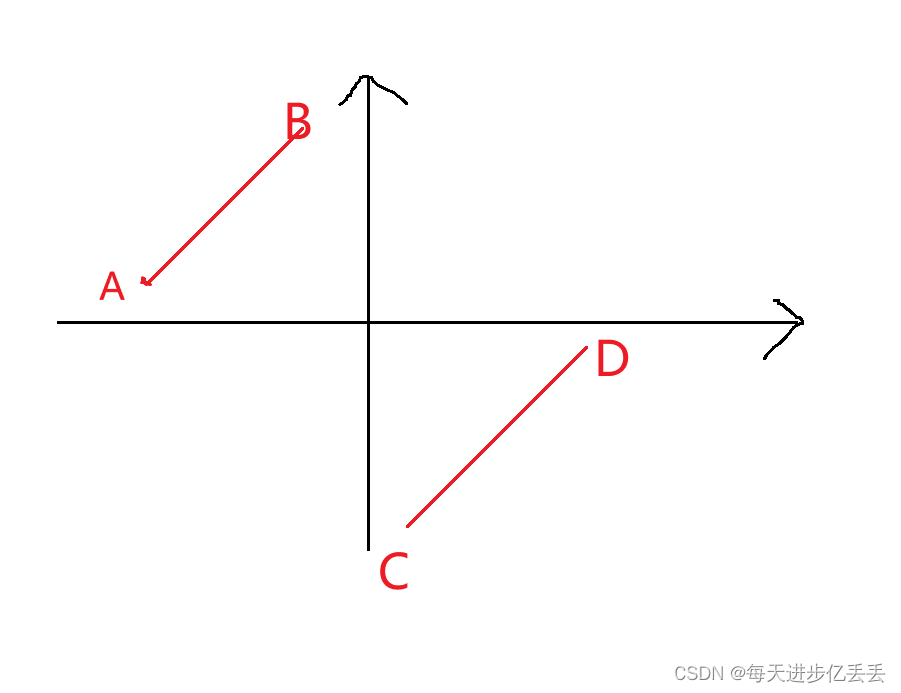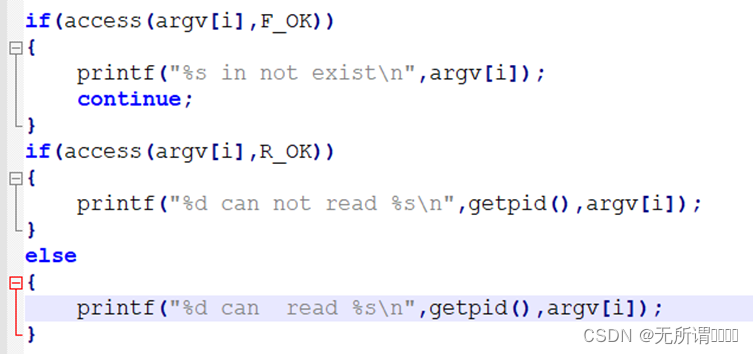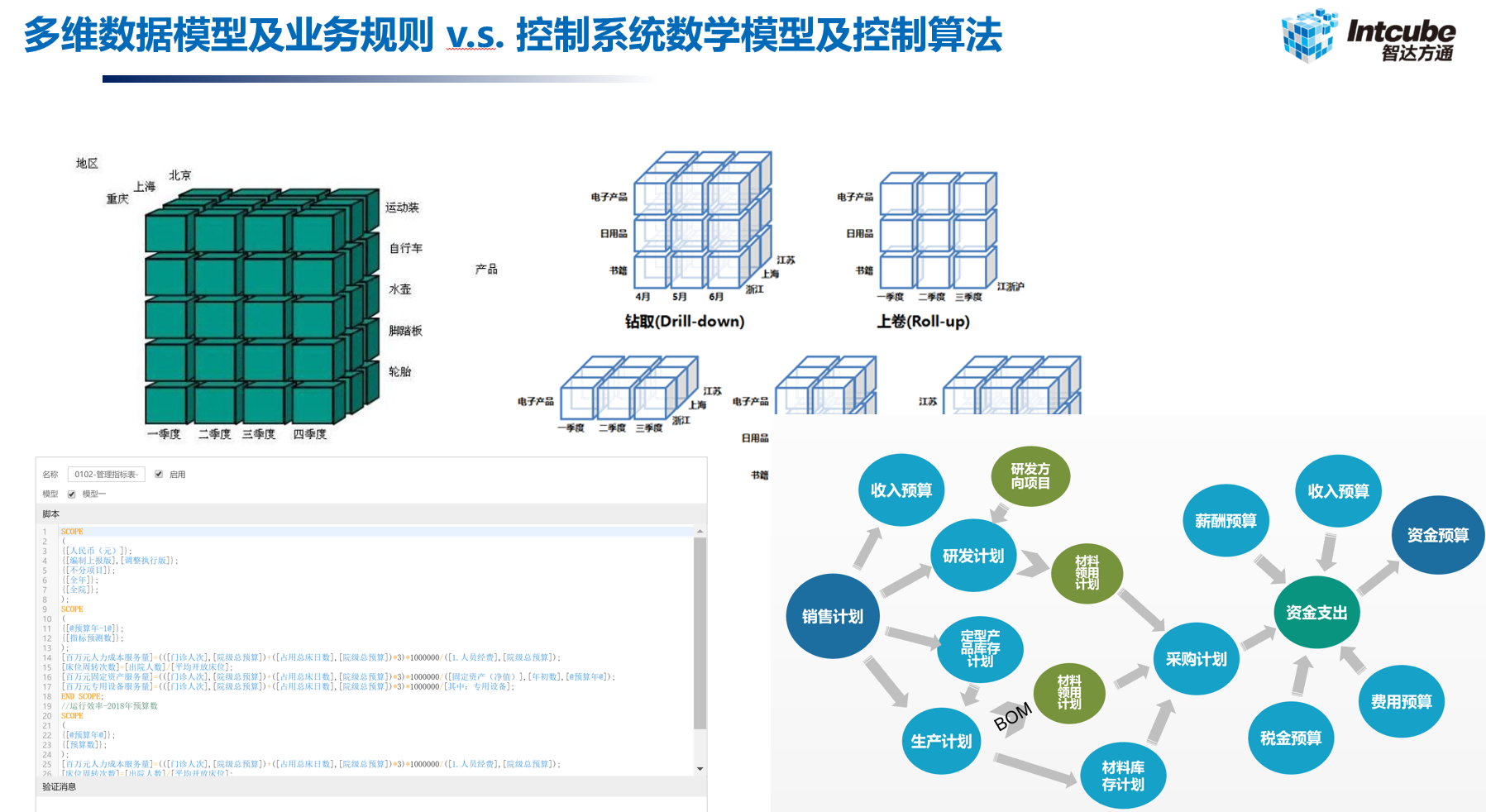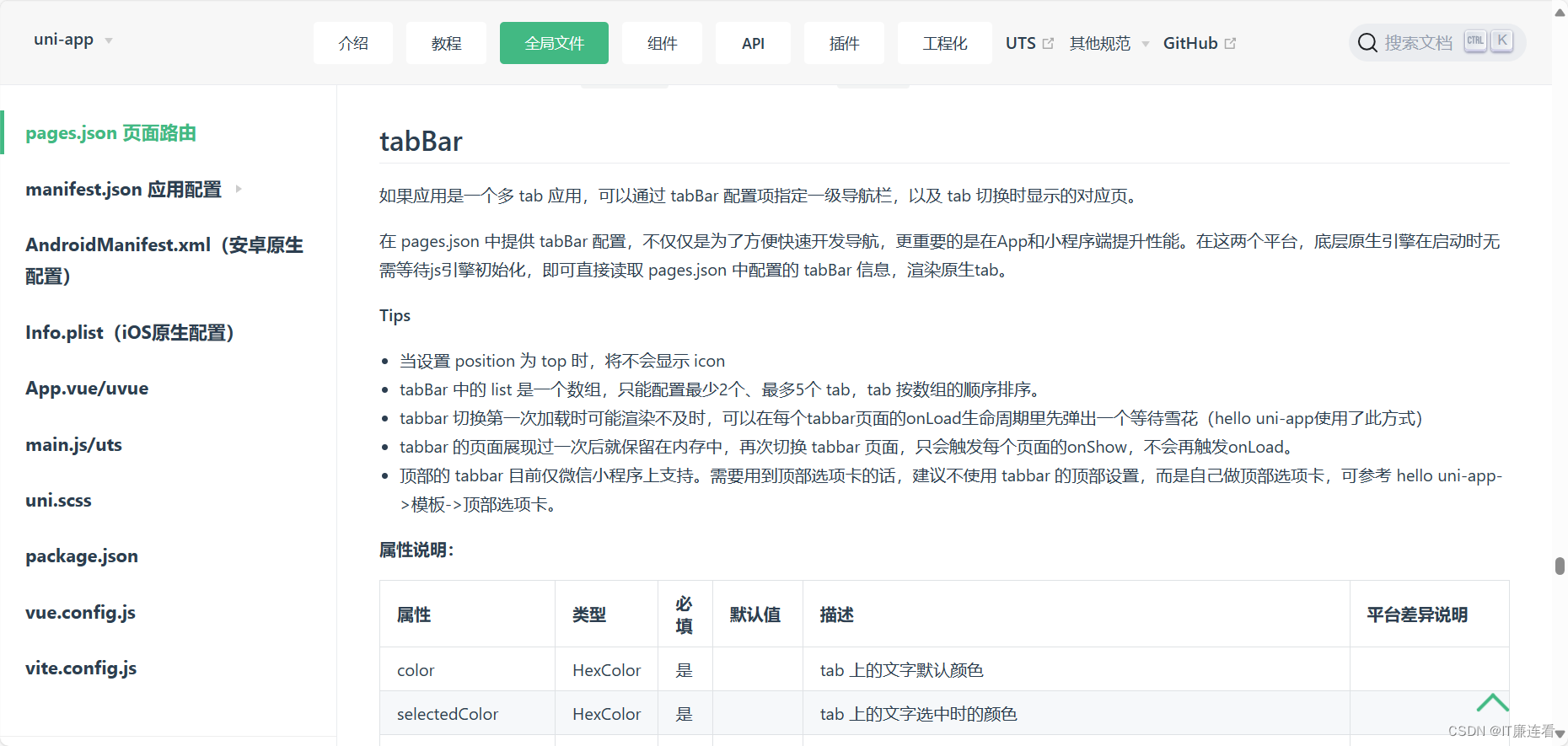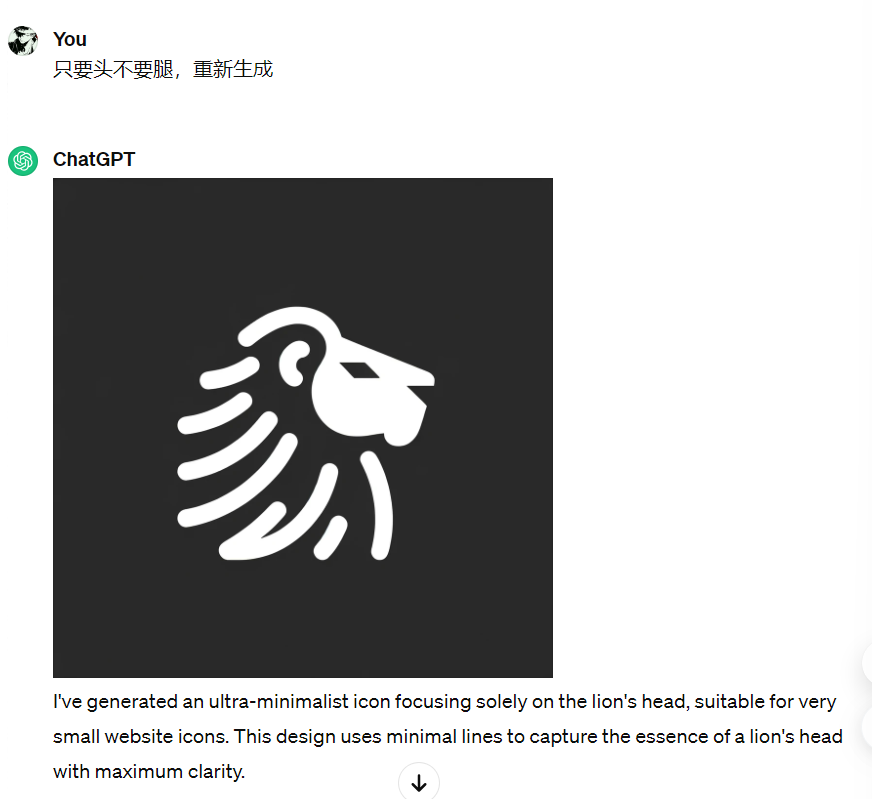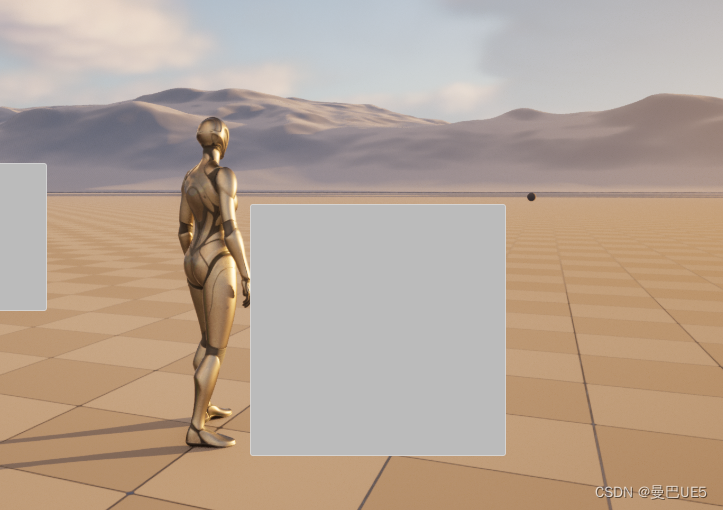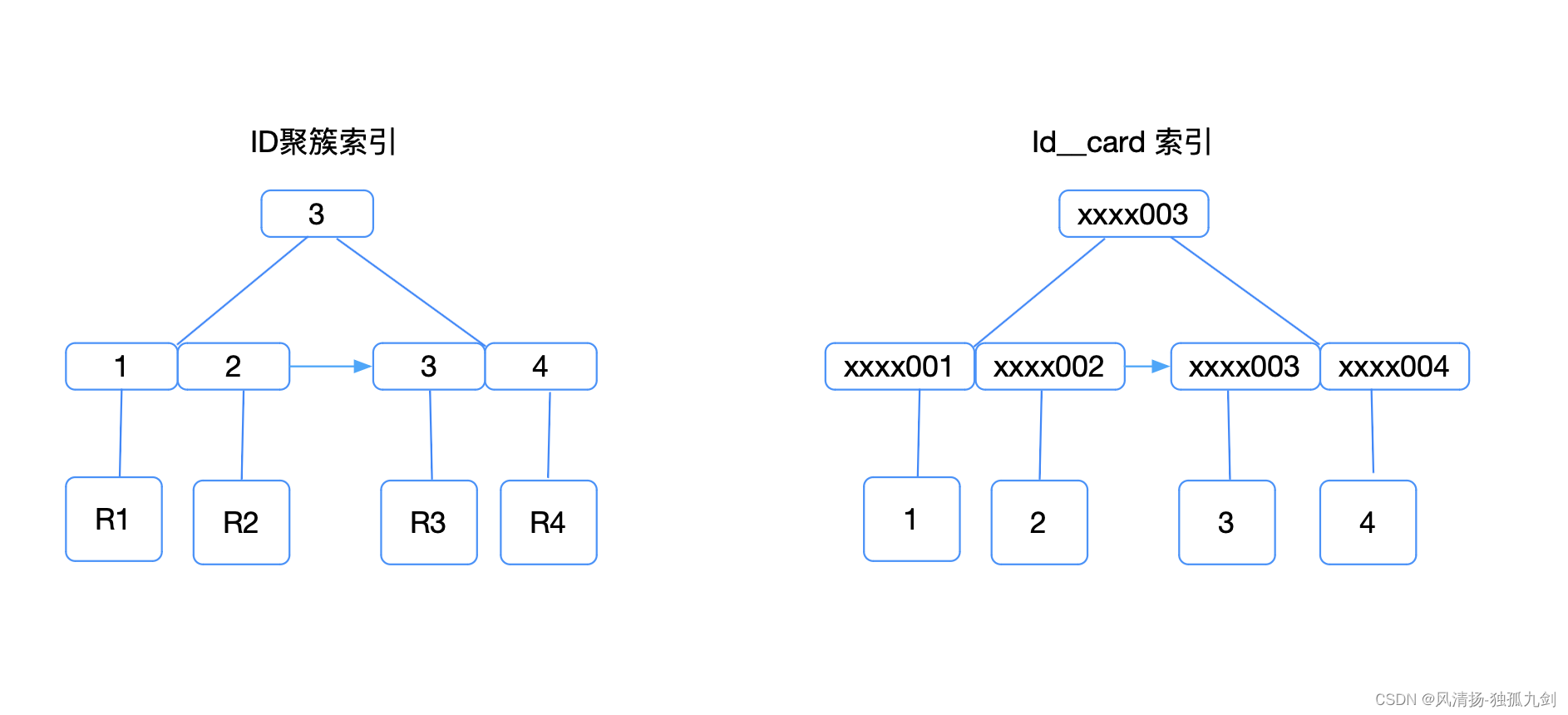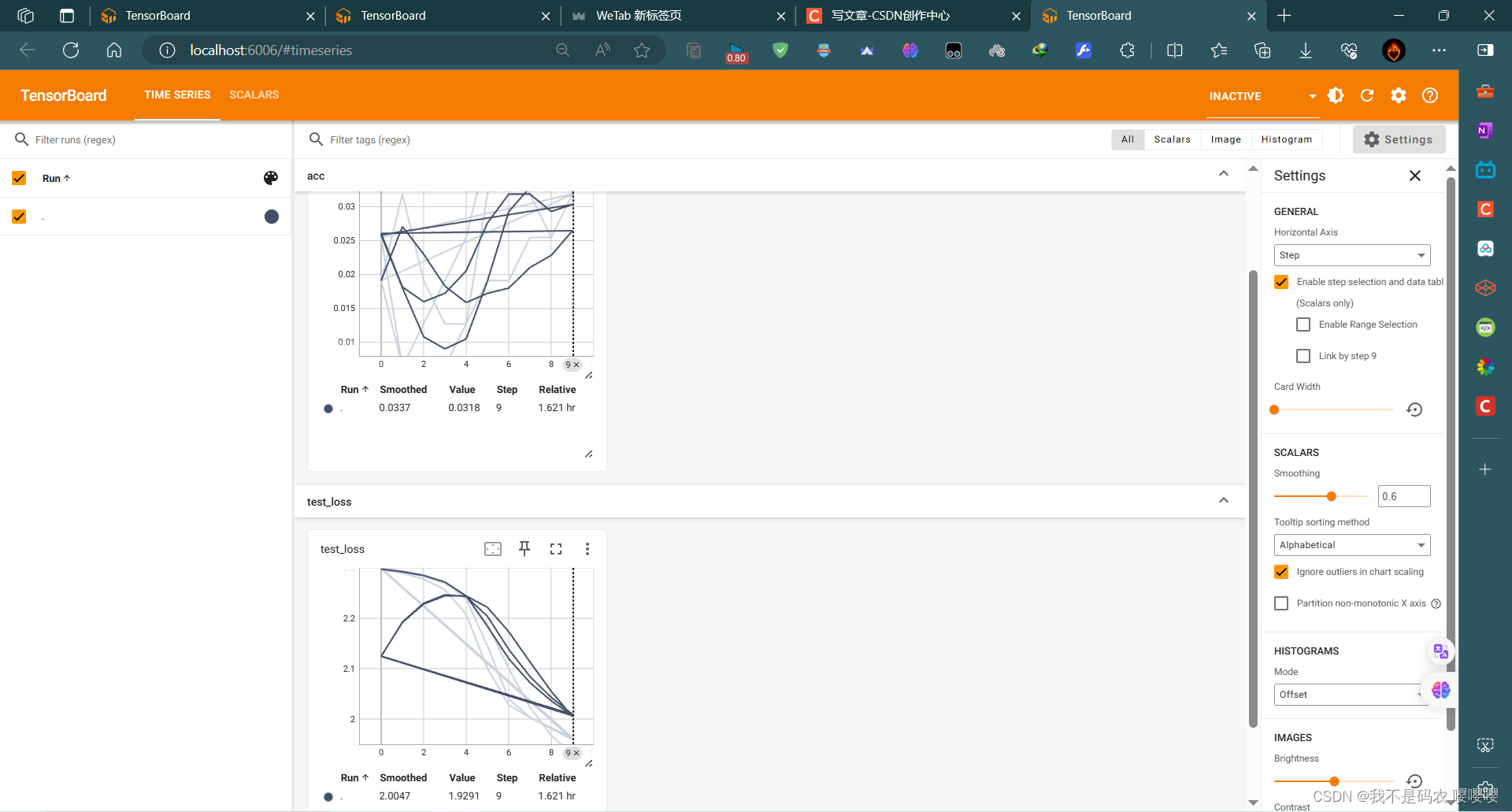提示:文章写完后,目录可以自动生成,如何生成可参考右边的帮助文档
文章目录
前言
模板初阶的补充
一、C语言中的字符串
二、标准库中的string类
2.1 string类(了解)
2.2 string类的常用接口说明(注意下面我只讲解最常用的接口)
1. string类对象的常见构造
2.遍历string类类型的字符数组
3.反向迭代器
4. string类对象的容量操作
5. string类对象的访问及遍历操作
6. string类对象的修改操作
总结
前言
世上有两种耀眼的光芒,一种是正在升起的太阳,一种是正在努力学习编程的你!一个爱学编程的人。各位看官,我衷心的希望这篇博客能对你们有所帮助,同时也希望各位看官能对我的文章给与点评,希望我们能够携手共同促进进步,在编程的道路上越走越远!
提示:以下是本篇文章正文内容,下面案例可供参考
模板初阶的补充




一、C语言中的字符串
C语言中,字符串是以'\0'结尾的一些字符的集合,为了操作方便,C标准库中提供了一些str系列的库函数, 但是这些库函数与字符串是分离开的,不太符合OOP的思想,而且底层空间需要用户自己管理,稍不留神可能还会越界访问。
二、标准库中的string类
2.1 string类(了解)
string类的文档介绍
- 字符串是表示字符序列的类
- 标准的字符串类提供了对此类对象的支持,其接口类似于标准字符容器的接口,但添加了专门用于操作单字节字符字符串的设计特性。
- string类是使用char(即作为它的字符类型,使用它的默认char_traits和分配器类型(关于模板的更多信 息,请参阅basic_string)。
- string类是basic_string模板类的一个实例,它使用char来实例化basic_string模板类,并用char_traits 和allocator作为basic_string的默认参数(根于更多的模板信息请参考basic_string)。
- 注意,这个类独立于所使用的编码来处理字节:如果用来处理多字节或变长字符(如UTF-8)的序列,这个 类的所有成员(如长度或大小)以及它的迭代器,将仍然按照字节(而不是实际编码的字符)来操作。
总结:
- string是表示字符串的字符串类
- 该类的接口与常规容器的接口基本相同,再添加了一些专门用来操作string的常规操作。
- string在底层实际是:basic_string模板类的别名,typedef basic_string string;
- 不能操作多字节或者变长字符的序列。
在使用string类时,必须包含#include头文件以及using namespace std;
2.2 string类的常用接口说明(注意下面我只讲解最常用的接口)
1. string类对象的常见构造
| constructor(构造函数名称) | 功能说明 |
| string() (重点) | 构造空的string类对象,即空字符串 |
| string(const char* s) (重点) | 用C-string来构造string类对象 |
| string(size_t n, char c) | string类对象中包含n个字符c |
| string(const string&s) (重点) | 拷贝构造函数 |
string (const string& str, size_t pos, size_t len = npos);
//在str字符串中,从pos位置开始,拷贝len个字符的长度
// npos:是-1,因为类型是无符号整型,所以是最大的整数void test_string1()
{
string s0;
string s1("hello world");
string s2(s1);//拷贝构造
string s3(s1, 5, 3);
string s4(s1, 5, 10);
string s5(s1, 5);
cout << s0 << endl;
cout << s1 << endl;
cout << s2 << endl;
cout << s3 << endl;
cout << s4 << endl;
cout << s5 << endl;
string s6(10, '#');
cout << s6 << endl;
s0 = s6;
cout << s0 << endl;
}
int main()
{
test_string1();
return 0;
}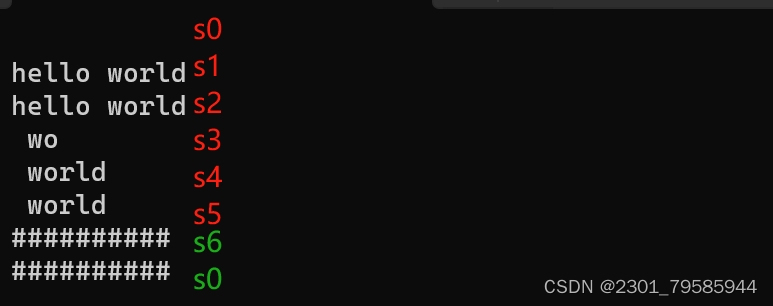
2.遍历string类类型的字符数组
方法一:下标 + [ ]
void test_string2()
{
string s1("hello world");
//遍历string类类型的字符数组:
// 方法一:下标+[] size:返回有多少个字符
for (size_t i = 0; i < s1.size(); i++)
{
cout << s1[i] << " ";//这两个是一样的
//cout << s1.operator[](i) << " ";//返回第i个位置的字符
}
cout << endl;
for (size_t i = 0; i < s1.size(); i++)
{
s1[i]++;//还可以对pos位置的字符进行修改
}
cout << endl;
for (size_t i = 0; i < s1.size(); i++)
{
cout << s1[i] << " ";
}
cout << endl;
string s3("hello world");
s3[0]++;
cout << s3 << endl;
cout << s3.size() << endl;
cout << s3.capacity() << endl;
}
int main()
{
test_string2();
return 0;
}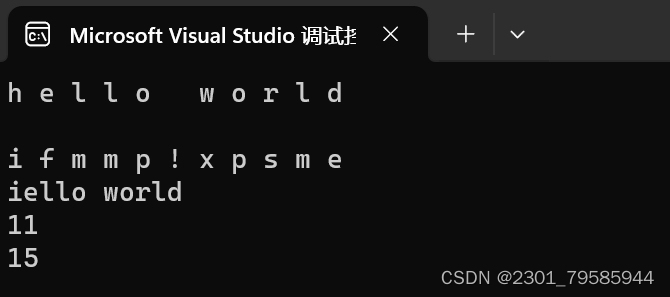
方法二:迭代器
void test_string2()
{
string s3("hello world");
s3[0]++;
cout << s3 << endl;
//方法二:迭代器
string::iterator it3 = s3.begin();//begin:获取第一个字符的位置
while (it3 != s3.end())//end:获取最后一个字符的下一个位置(是左闭右开的格式)
{
cout << *it3 << " ";
++it3;
}
cout << endl;
it3 = s3.begin();
while (it3 != s3.end())
{
*it3 -= 3;
++it3;
}
cout << endl;
cout << typeid(it3).name() << endl;//typeid:查看一个对象的类型
}
int main()
{
test_string2();
return 0;
}
方法三:范围for循环
void test_string2()
{
string s3("hello world");
s3[0]++;
cout << s3 << endl;
// 底层就是迭代器
for (auto e : s3)
{
cout << e << " ";
}
cout << endl;
}
int main()
{
test_string2();
return 0;
}
3.反向迭代器

void test_string3()
{
string s1("hello world");
//反向迭代器
string::reverse_iterator rit = s1.rbegin();
while (rit != s1.rend())
{
cout << *rit << " ";
++rit;
}
cout << endl;
// 可读可写
string::iterator it2 = s1.begin();
while (it2 != s1.end())
{
*it2 += 3;
cout << *it2 << " ";
++it2;
}
cout << endl;
// 只读
const string s3("hello world");
string::const_iterator it3 = s3.begin();
while (it3 != s3.end())
{
// *it3 += 3;
cout << *it3 << " ";
++it3;
}
cout << endl;
// const_reverse_iterator
}
int main()
{
test_string3();
return 0;
}
4. string类对象的容量操作
| 函数名称 | 功能说明 |
| size (重点) | 返回字符串有效字符长度 |
| length | 返回字符串有效字符长度 |
| capacity | 返回空间总大小 |
| empty (重点) | 检测字符串释放为空串,是返回true,否则返回false |
| clear (重点) | 清空有效字符 |
| reserve (重点) | 为字符串预留空间** |
| resize (重点) | 将有效字符的个数改成n个,多出的空间用字符c填充 |
string容量相关方法使用代码演示
注意:
- size()与length()方法底层实现原理完全相同,引入size()的原因是为了与其他容器的接口保持一 致,一般情况下基本都是用size()。
- clear()只是将string中有效字符清空,不改变底层空间大小。
- resize(size_t n) 与 resize(size_t n, char c)都是将字符串中有效字符个数改变到n个,不同的是当字符个数增多时:resize(n)用0来填充多出的元素空间,resize(size_t n, char c)用字符c来填充多出的元素空间。注意:resize在改变元素个数时,如果是将元素个数增多,可能会改变底层容量的大小,如果是将元素个数减少,底层空间总大小不变。
- reserve(size_t res_arg=0):为string预留空间,不改变有效元素个数,当reserve的参数小于 string的底层空间总大小时,reserver不会改变容量大小。
先来看 reserve(预留空间) 和 clear(清除数据) 操作:
// reserve // 保留
// reverse // 反转 翻转
void test_string4()
{
string s1("hello worldxxxxxxxxxxxxxxxxxxxxxxxxxxxxxxxxxxxxxxxxxxxxxxxxxxxxxxxxxxxxxxxxxxxxxxxxxxxxxxxxxxxxxxxxxxxxxxxxxxxxxxxxxxxxxxxxxxxxxxxxxxxxxxxxxxxxxxxxxxxxxxxx");
cout << s1.size() << endl;
cout << s1.length() << endl;
cout << s1.max_size() << endl;
cout << s1.capacity() << endl;
// 查看扩容机制
string s;
s.reserve(100);//提前保留100个容量,有可能比100个容量多(它是手动扩容)
size_t sz = s.capacity();
cout << "capacity changed: " << sz << '\n';//第一次显示堆区上capacity空间的大小
cout << "making s grow:\n";
for (int i = 0; i < 100; ++i)
{
s.push_back('c');//如果一直尾插到capacity空间的大小不够用的话,capacity的大小会扩大(它是自动扩容)
if (sz != s.capacity())//新的capacity大小与旧的capacity大小的比较
{
sz = s.capacity();
cout << "capacity changed: " << sz << '\n';
}
}
cout << s1 << endl;
cout << s1.capacity() << endl;
cout << s1.size() << endl;
s1.clear();//clear:清理数据的,不回收空间
cout << s1 << endl;
cout << s1.capacity() << endl;
cout << s1.size() << endl;
// 缩容
s1.shrink_to_fit();
cout << s1.capacity() << endl;
cout << s1.size() << endl;
}
int main()
{
test_string4();
return 0;
}
再来看 resize 的操作:
void test_string5()
{
string s1("hello worldxxxxxx");
cout << s1.size() << endl;
cout << s1.capacity() << endl;
// 比当前capacity大才会扩容
s1.reserve(200);//reserve:改变的容量;resize:改变的size
cout << s1.size() << endl;
cout << s1.capacity() << endl;
cout << "xxxxxxxxxxxxxxxxxxxxxxxxxxxxxxxxxxxx" << endl;
string s2("hello worldxxxxxx");
cout << s2.size() << endl;
cout << s2.capacity() << endl << endl;
s2.resize(10);//保留前10个数据
cout << s2.size() << endl;
cout << s2.capacity() << endl << endl;
s2.resize(20);//size < 20 < capacity;保留了字符串,剩下的默认用'\0'来补充
cout << s2.size() << endl;
cout << s2.capacity() << endl << endl;
s2.resize(100, 'x');// capacity < 100;扩容并插入'x'
cout << s2.size() << endl;
cout << s2.capacity() << endl << endl;
}
int main()
{
test_string5();
return 0;
}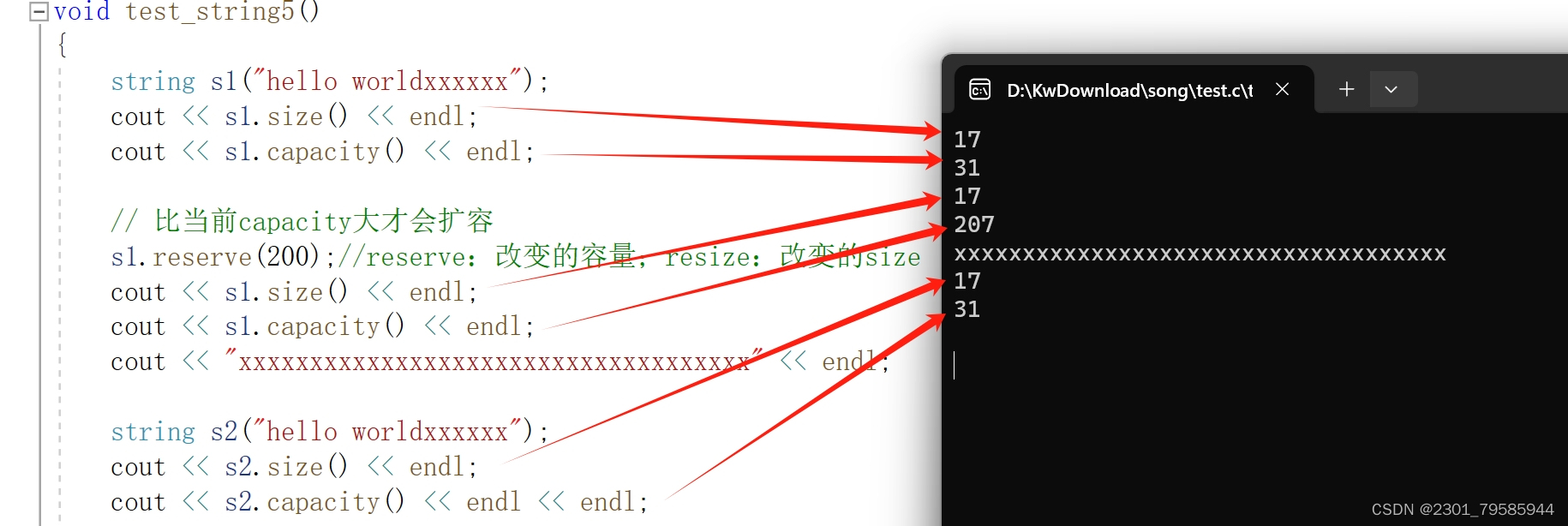



5. string类对象的访问及遍历操作
| 函数名称 | 功能说明 |
| operator [] (重点) | 返回pos位置的字符,const string类对象调用 |
| begin + end | begin获取一个字符的迭代器 + end获取最后一个字符下一个位置的迭 代器 |
| rbegin + rend | begin获取一个字符的迭代器 + end获取最后一个字符下一个位置的迭 代器 |
| 范围for | C++11支持更简洁的范围for的新遍历方式 |
string元素访问及遍历代码演示
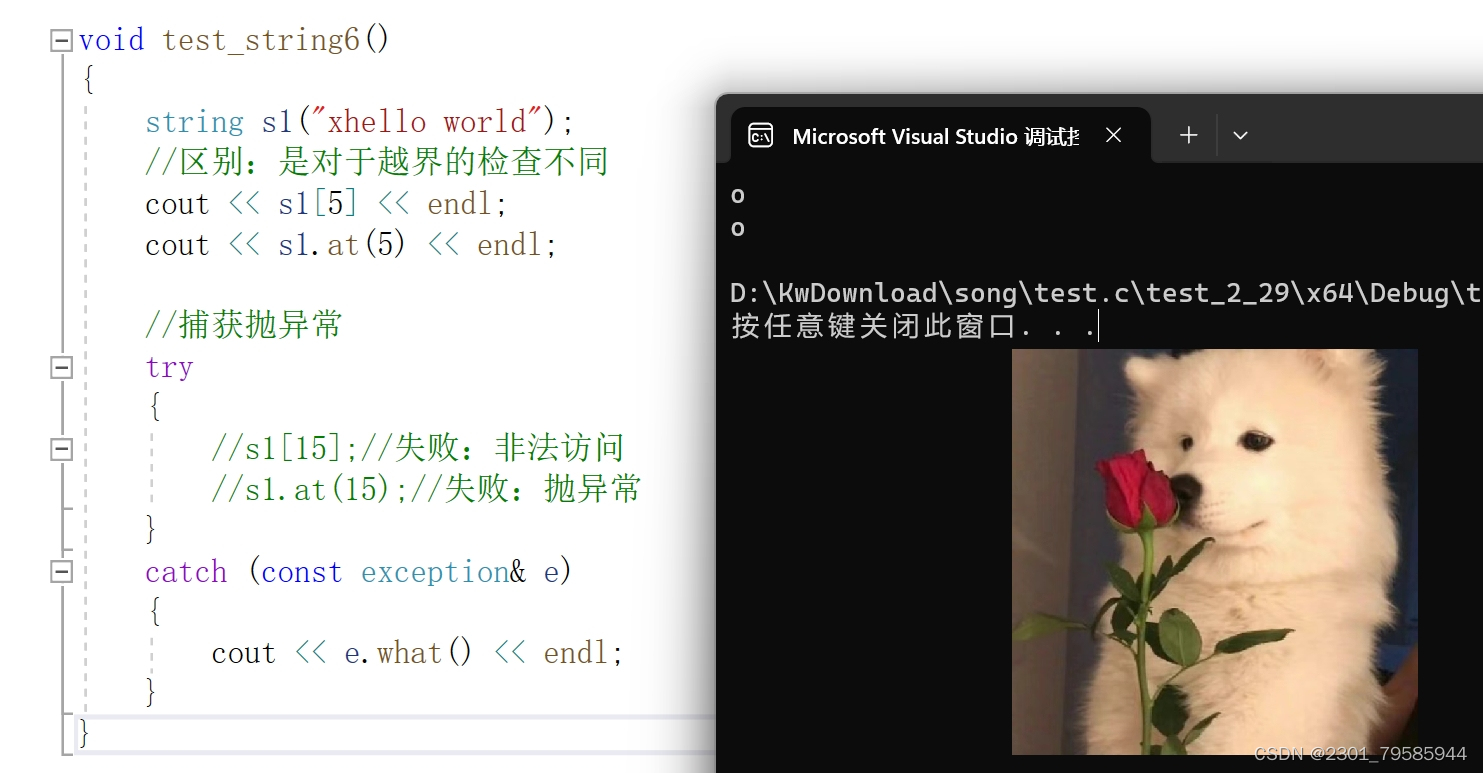
6. string类对象的修改操作
| 函数名称 | 功能说明 |
| push_back | 在字符串后尾插字符c |
| append | 在字符串后追加一个字符串 |
| operator+=(重点) | 在字符串后追加字符串str |
| c_str(重点) | 返回C格式字符串 |
| find + npos(重点) | 从字符串pos位置开始往后找字符c,返回该字符在字符串中的位置 |
| rfind | 从字符串pos位置开始往前找字符c,返回该字符在字符串中的位置 |
| substr | 在str中从pos位置开始,截取n个字符,然后将其返回 |
string中插入和查找等使用代码演示
注意:
- 在string尾部追加字符时,s.push_back(c) / s.append(1, c) / s += 'c'三种的实现方式差不多,一般情况下string类的+=操作用的比较多,+=操作不仅可以连接单个字符,还可以连接字符串。
- 对string操作时,如果能够大概预估到放多少字符,可以先通过reserve把空间预留好。
void test_string7()
{
string s1("xhello world");
s1.push_back('!');
cout << s1 << endl;
s1.append("hello bit");
cout << s1 << endl;
s1.append(10, 'x');
cout << s1 << endl;
string s2(" apple ");
//s1.append(s2);
//cout << s1 << endl;
s1.append(++s2.begin(), --s2.end());
cout << s1 << endl;
string s3("hello world");
s3 += ' ';
s3 += "apple";
cout << s3 << endl;
}
int main()
{
test_string7();
return 0;
}
insert 、 erase 和 replace 的操作:
void test_string8()
{
string s1("xhello world");
cout << s1 << endl;
s1.assign(" xxxxx");//assign:覆盖字符串的操作
cout << s1 << endl;
s1.insert(0, "yyyy");//在pos位置之前插入
cout << s1 << endl;
s1.erase(5, 3);//从第5个位置开始,向后删除3个字符
cout << s1 << endl;
s1.erase();//删除字符串
cout << s1 << endl;
string s2("hello world hello bit");
/*s2.replace(5, 1, "20%");//从第5个位置开始,替换一个字符为%20
cout << s2 << endl;*/
/*size_t pos = s2.find(' ');
while (pos != string::npos)
{
s2.replace(pos, 1, "20%");
pos = s2.find(' ');//替换完了,继续查找' '字符
}
cout << s2 << endl;*/
// insert/erase/replace
// 能少用就要少用,因为基本都要挪动数据,效率不高
string s3;
s3.reserve(s2.size());//提前保留好空间(s2字符的数量)
for (auto ch : s2)
{
//如果ch变量等于空格,则把字符拷贝下来;否则,就将空格变为%20
if (ch != ' ')
{
s3 += ch;
}
else
{
s3 += "20%";
}
}
cout << s3 << endl;
s2.swap(s3);
cout << s2 << endl;
}
int main()
{
test_string8();
return 0;
}
总结
好了,本篇博客到这里就结束了,如果有更好的观点,请及时留言,我会认真观看并学习。
不积硅步,无以至千里;不积小流,无以成江海。
